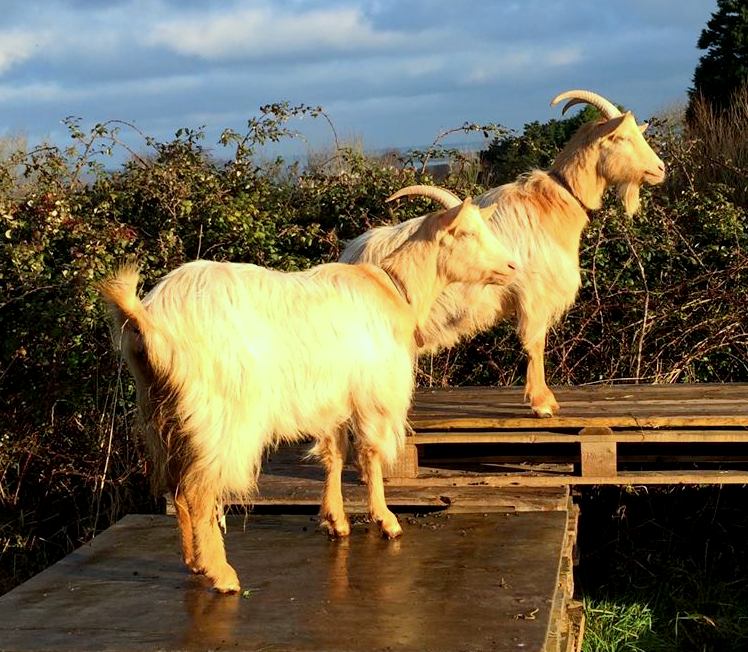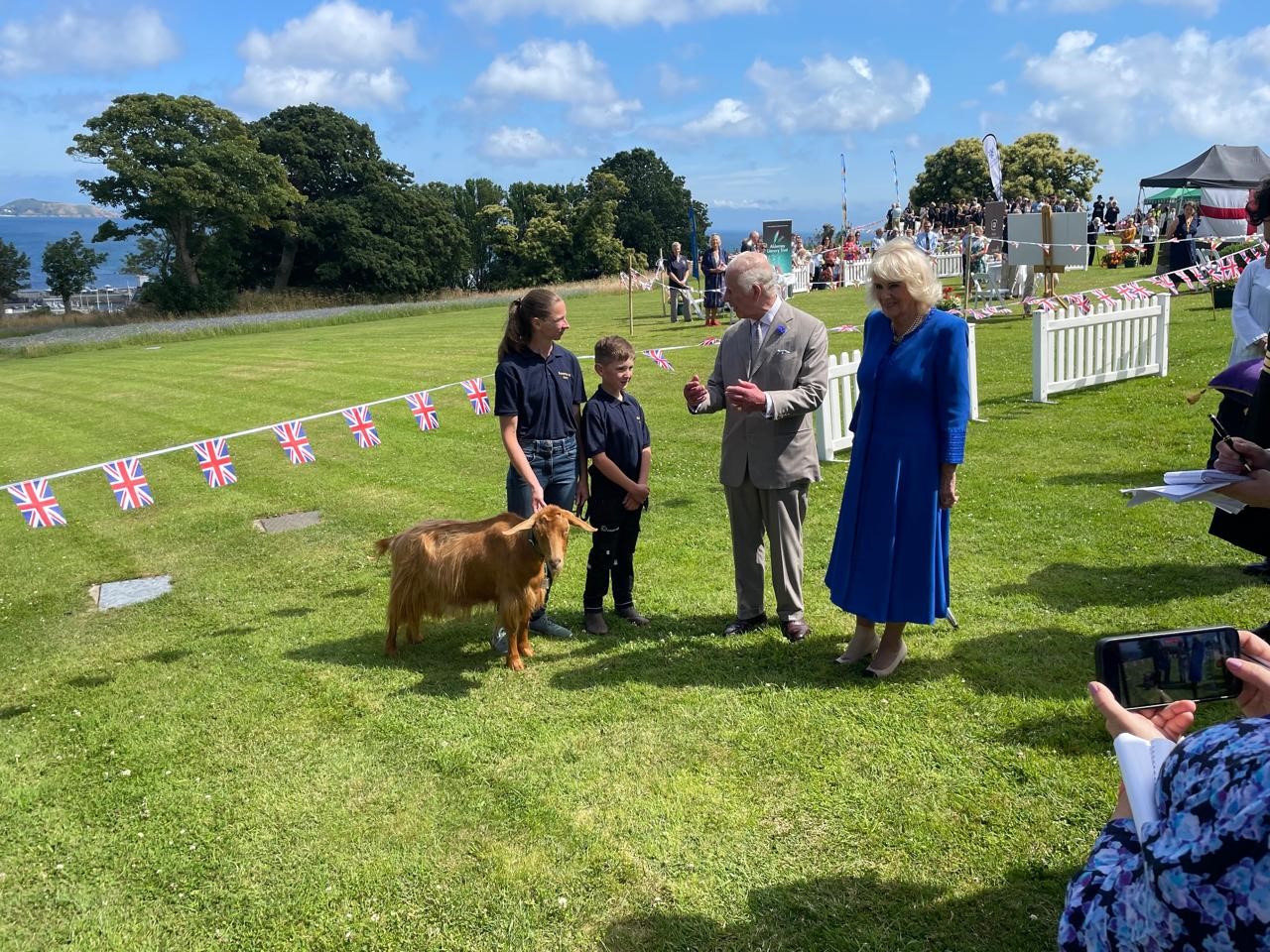The Royal Golden Guernsey is an attractive animal that has grown in popularity recently as a useful household goat with it's pleasant temperament & a steady milk yield containing good nutritional qualities. Their reliability in food conversion & placid temperament make it an economical proposition as a family animal.
The Royal Golden Guernsey goat is distinguished by it's golden skin & hair which often takes a lighter look. It can be fairly long down the back and hind legs. In the breed standard, variation is allowed in the coat of golden colour, along with small white markings and on the head a blaze or star, but no Swiss markings are accepted, or pink/grey colouring. They are a fine boned animal with a straight or slightly dished facial line; the ears have a slight upturn at the tip & the neck is slender.
They are a fairly small goat, adult males weighing 190-200lbs and adult females from 120-130lbs and their conformation is neat & aesthetically pleasing. The origin of the Royal Golden Guernsey Goat is uncertain though they have been in the Island of Guernsey for many years. They were mentioned as long ago as 1826 in a Channel Island Guidebook, when the golden cow, goat and donkey were mentioned.
Registration first started in 1922 in The Guernsey Goat Society's general herd book.
Miss Miriam Milbourne of L'Ancresse, Guernsey, played a large part in reviving the breed in the 1930's and was encouraged by Dr Tracy, a British Goat Society judge. Miss Milbourne managed to retain her herd during the Occupation and on her death her animals passed into the care of a trust.
Many of Miriam Melbourne's hand written documents and records that she kept are on display in the Museum in Guernsey, they were kindly donated by her Great niece.
In 1965 a separate Golden Guernsey register was opened in the Guernsey Goat Society's Herd Book. The first successful imports to England were in 1967 and the inaugural meeting of the mainland club was in 1969. The BGS Golden Guernsey register was opened in 1971.
Royal Title.
King Charles III visited the Island of Guernsey on Tuesday 16th July 2024 and awarded the title Royal to be given to all registered Golden Guernsey Goats from that day forward throughout the world. The breed is now known as the "Royal Golden Guernsey Goat" an amazing honour as this was the first time that any form of livestock had received this.
The picture below shows the King and Queen presenting a brass engraved bell to one of the Islands local Golden Guernsey Goats, Summerville Tamsin (owned by Rebecca Martin). The bell will be on display for all to see in future.
Current Situation by the President, Peter Girard
The current situation on the Island regarding Golden Guernsey goats depends on your nature! Optimist or pessimist!
Pessimistic view:
Compared to the 1970’s the Golden Guernsey numbers have declined and the export of some top male goats did not help the local ones. Fewer numbers of goats and particularly males, means the gene pool is very small and is in danger of no longer being viable.
Optimistic view:
Since a low point in the late 1990’s the numbers seem to be slowly increasing. More people are expressing an interest in keeping goats. Three males were imported from England in the 2000’s.
The breed itself has improved, particularly the udders. Several people have qualified to do AI (Artificial Insemination), this has since resulted in the birth of the first Golden Guernsey Goats to be born on the Island from AI, being a male and two females.
Generally the present and future looks good, but we cannot rest for a moment, or the Island of Guernsey will no longer have any of her goats left.


